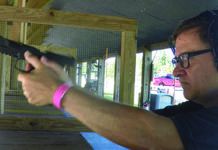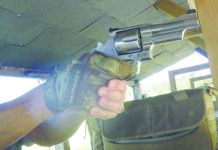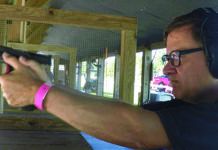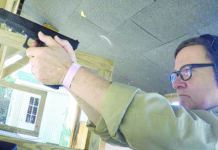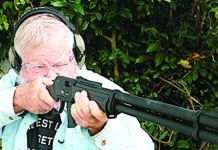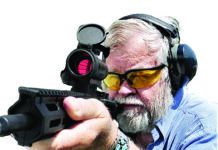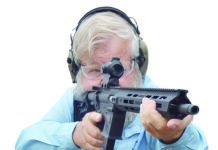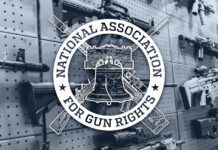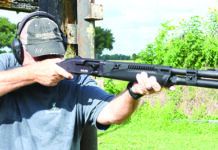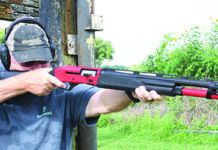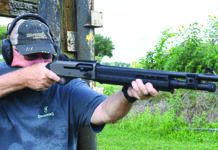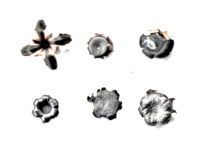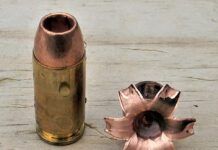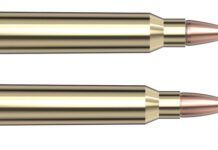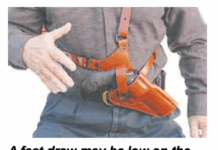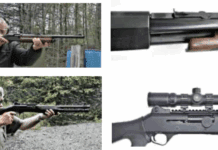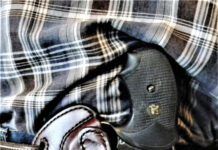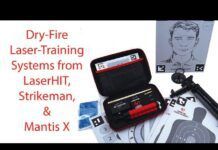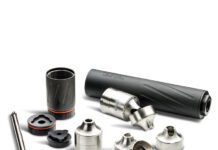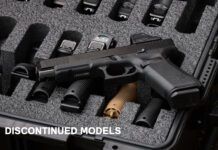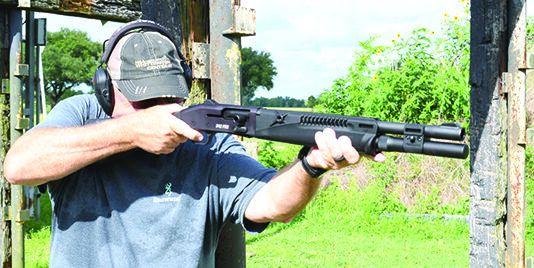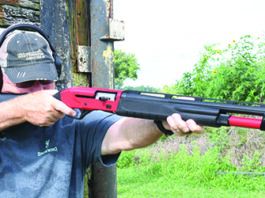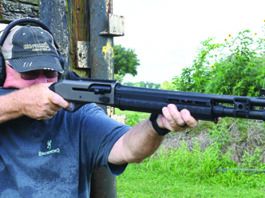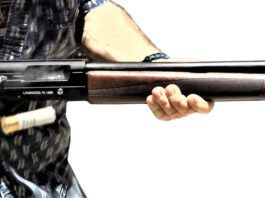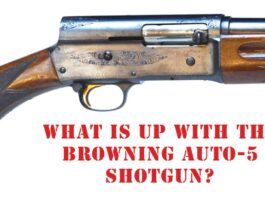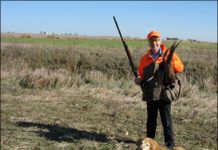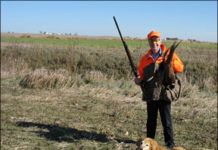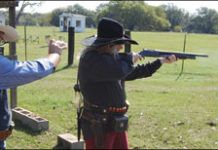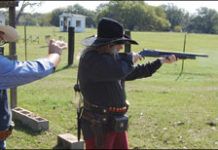Quarterly Firearm and Ammunition Excise Taxes up 43%
The National Shooting Sports Foundation reports that according to the most recent Firearms and Ammunition Excise Tax Collection Report released last week by the Department of the Treasury, firearm and ammunition manufacturers paid more than $109.8 million in the first calendar quarter of 2009; up 43% over the same time period reported in 2008.
Sturm, Ruger & Company, Inc. Reports Second Quarter Earnings
Sturm, Ruger & Company, Inc. (NYSE-RGR) announced last week that for the second quarter of 2009, the Company reported net sales of $72.4 million and earnings of 46¢ per share, compared with sales of $38.7 million and earnings of 5¢ per share in the second quarter of 2008.
Beretta’s June Commercial Pistol Sales Up 219%
Beretta U.S.A. Corp. announced outstanding June sales results last week.
Will Taurus Stay in Florida? Georgia Makes a Run at Company
The Miami-Herald has reported that the state of Georgia is offering free land, new buildings, and tax abatements to convince firearms maker Taurus USA to leave Florida.
Post a Hunting Photo, Go to Jail
A case to be heard by Supreme Court of the United States might result in felony charges and jail time for any person, outlet or entity that shows or sells depictions of hunting activities. Taking, selling or publishing images of hunting, fishing or trapping could mean felony charges and jail time.
NICS Checks Up 18.1 Percent in June
Data released by the FBI's National Instant Criminal Background Check System (NICS) reported 968,145 checks in June 2009, up 18.1 percent from the 819,891 reported in June 2008.
12-Gauge Autoloader Shoot-Out: Beretta, Benelli, and Remington
Ever since the introduction of the Browning Auto-Five, autoloading shotguns have taken places of the distinction in the hunting fields across the country. The soft-shooting Remington 1100 soared to popularity in the 1960s, popularity that has since waned in favor of more versatile models. Here, we turn our critical eyes to the latest generation of the Beretta 3-inch autoloader, the Urika 2 Gold, the hypebole-laden Benelli Vinci that is new for 2009, and the re-release of the Remington CTi105-now designated the CTi105 II, also 'new for 2009.' They are all $1500 or so sticker-priced autoloaders, they all claim to be technically advanced, and they are all offered solely in 3-inch models. We were extremely interested to see if the latest and greatest are what they claim to be, or not. The Beretta Urika 2 Gold, introduced at the 2007 SHOT Show, has finally arrived. The 12 gauge with 3-inch chambers, Optima 28-inch barrel and chokes, is one of the most popular semiauto configurations offered. The Urika 2 is available with a standard walnut stock (as tested) or as the 'X-tra-Grain' version (a wood stock with grain artificially burned in). To say that we have used the Beretta 303/390/391 series extensively over the years would be an understatement. Countless models have come and gone from our working shotgun repertoire. The tested Urika 2 12/28 weighs 7.9 pounds. To compare this to identically barreled guns, an AL390 Gold Mallard weighs 8 pounds and an AL390 DU 12 gauge weighs 8.25. The steel-receiver B-80 12 gauges weigh 8.6 pounds.
12-Gauge Autoloader Shoot-Out: Beretta, Benelli, and Remington
Ever since the introduction of the Browning Auto-Five, autoloading shotguns have taken places of the distinction in the hunting fields across the country. The soft-shooting Remington 1100 soared to popularity in the 1960s, popularity that has since waned in favor of more versatile models. Here, we turn our critical eyes to the latest generation of the Beretta 3-inch autoloader, the Urika 2 Gold, the hypebole-laden Benelli Vinci that is new for 2009, and the re-release of the Remington CTi105-now designated the CTi105 II, also 'new for 2009.' They are all $1500 or so sticker-priced autoloaders, they all claim to be technically advanced, and they are all offered solely in 3-inch models. We were extremely interested to see if the latest and greatest are what they claim to be, or not. The Beretta Urika 2 Gold, introduced at the 2007 SHOT Show, has finally arrived. The 12 gauge with 3-inch chambers, Optima 28-inch barrel and chokes, is one of the most popular semiauto configurations offered. The Urika 2 is available with a standard walnut stock (as tested) or as the 'X-tra-Grain' version (a wood stock with grain artificially burned in). To say that we have used the Beretta 303/390/391 series extensively over the years would be an understatement. Countless models have come and gone from our working shotgun repertoire. The tested Urika 2 12/28 weighs 7.9 pounds. To compare this to identically barreled guns, an AL390 Gold Mallard weighs 8 pounds and an AL390 DU 12 gauge weighs 8.25. The steel-receiver B-80 12 gauges weigh 8.6 pounds.
Beretta A391 Teknys Gold Sporting J391T78 12 Gauge
Like most Beretta’s we’ve opened a box on, the Teknys Gold Sporting is immediately eye-catching. Our sample sported a chocolate-cherry piece of wood that while not fancily figured, showed some very handsome striation. With an oil finish that’s polished enough to look like a lacquer finish, this stock is nice enough that it justifies the gun’s steeper price tag.
BATFE Rules on Manufacturing of Firearms Points
Below are examples of operations performed on firearms and guidance as to whether or not such operations would be considered manufacturing under the Gun Control Act (GCA).
Duel at the Mostly OK Corral: 12-Ga. Cowboy Action Shotguns
Cowboy Action Shooting members, whose increasing numbers show no need of a stimulus package, have developed their hobby into a tribute to the gun battles of the Old West-both real and fictional. Shotguns often figured into these armed conflicts, normally giving the scattergun handler a distinct advantage over opponents armed with a handgun or rifle, as long as the battle was up close and personal.One of Hollywoods classic depictions of how a shotgun could turn the tide in a gun battle was in the 1966 movie The Professionals, featuring Academy-award-winning actors Lee Marvin and Burt Lancaster.Marvin, armed with a Winchester Model 1897 pump-action shotgun, faces down eight mounted bandits armed with bolt-action rifles as they meet in a narrow canyon. With just a little help from Lancaster, himself armed with a Winchester lever-action rifle, Marvin clears the canyon of bandits as he touches off seven shotgun blasts in rapid succession. Most of the bad guys dont even have a chance to get off a shot before they are knocked out of the saddle.Although the battle is pure Hollywood, this type of shotgun action and its recreation on film has become a driving force behind the increasing popularity of the veteran firearms. Both the side-by-side hammer guns and the pump-action hammer guns of old left a distinct mark in history and are now resurfacing in the form of replicas finding favor at shooting competitions across the country. The popularity of the simple and easy-to-handle shotguns is also growing among people interested in home-defense firearms.For our trip back to the past, we selected both a side-by-side and a pump action to see if there is any advantage or downside-other than the number of shots-with either Old West style shotgun.Our test shotguns were a Cimarron T.T.N. Model 1878 Coach Gun 12 Gauge Side-by-Side and a Cimarron Model 1897 Pump 12 Gauge Shotgun,both carrying a price tag of $480 in the new gun rack at Durys Gun Shop in San Antonio (www.durysguns.com). Because of the popularity of the firearms, we waited more than six months to receive the back-order Model 1897.Both of the shotguns are recreations of solid, dependable and well-used scatterguns of the Old West. With their 20-inch barrels and simple actions, the two firearms are also fulfilling a modern duty as self-dense shotguns for home owners. Shotguns firing typical hunting loads in a home-defense situation have the advantage of providing stopping power that will not pass through walls like handgun or rifle slugs.To determine the effectiveness of both shotguns, we selected three distinctly different types of ammunition for our testing. For the Cowboy-Action range, our ammunition was Rio Target 2.75-inch loads with 1 ounce of No. 8 shot that produced an average muzzle velocity of 1,210 fps. For our home-defense loads, we used Winchester 00 Buckshot 2.75-inch loads firing nine pellets at an average muzzle velocity of 1,325 fps, and Remington Express Power Piston 2.75-inch loads with 1.25 ounces of No. 6 shot pushed at an average muzzle velocity of 1,330 fps.In the home-defense simulations, we limited our patterning tests to a range of 20 feet (recreating a shot across a typical room) and relied upon Birchwood Casey Shoot-N-C 12-inch targets to determine pattern effectiveness. Heres our test report:
Duel at the Mostly OK Corral: 12-Ga. Cowboy Action Shotguns
Cowboy Action Shooting members, whose increasing numbers show no need of a stimulus package, have developed their hobby into a tribute to the gun battles of the Old West-both real and fictional. Shotguns often figured into these armed conflicts, normally giving the scattergun handler a distinct advantage over opponents armed with a handgun or rifle, as long as the battle was up close and personal.One of Hollywoods classic depictions of how a shotgun could turn the tide in a gun battle was in the 1966 movie The Professionals, featuring Academy-award-winning actors Lee Marvin and Burt Lancaster.Marvin, armed with a Winchester Model 1897 pump-action shotgun, faces down eight mounted bandits armed with bolt-action rifles as they meet in a narrow canyon. With just a little help from Lancaster, himself armed with a Winchester lever-action rifle, Marvin clears the canyon of bandits as he touches off seven shotgun blasts in rapid succession. Most of the bad guys dont even have a chance to get off a shot before they are knocked out of the saddle.Although the battle is pure Hollywood, this type of shotgun action and its recreation on film has become a driving force behind the increasing popularity of the veteran firearms. Both the side-by-side hammer guns and the pump-action hammer guns of old left a distinct mark in history and are now resurfacing in the form of replicas finding favor at shooting competitions across the country. The popularity of the simple and easy-to-handle shotguns is also growing among people interested in home-defense firearms.For our trip back to the past, we selected both a side-by-side and a pump action to see if there is any advantage or downside-other than the number of shots-with either Old West style shotgun.Our test shotguns were a Cimarron T.T.N. Model 1878 Coach Gun 12 Gauge Side-by-Side and a Cimarron Model 1897 Pump 12 Gauge Shotgun,both carrying a price tag of $480 in the new gun rack at Durys Gun Shop in San Antonio (www.durysguns.com). Because of the popularity of the firearms, we waited more than six months to receive the back-order Model 1897.Both of the shotguns are recreations of solid, dependable and well-used scatterguns of the Old West. With their 20-inch barrels and simple actions, the two firearms are also fulfilling a modern duty as self-dense shotguns for home owners. Shotguns firing typical hunting loads in a home-defense situation have the advantage of providing stopping power that will not pass through walls like handgun or rifle slugs.To determine the effectiveness of both shotguns, we selected three distinctly different types of ammunition for our testing. For the Cowboy-Action range, our ammunition was Rio Target 2.75-inch loads with 1 ounce of No. 8 shot that produced an average muzzle velocity of 1,210 fps. For our home-defense loads, we used Winchester 00 Buckshot 2.75-inch loads firing nine pellets at an average muzzle velocity of 1,325 fps, and Remington Express Power Piston 2.75-inch loads with 1.25 ounces of No. 6 shot pushed at an average muzzle velocity of 1,330 fps.In the home-defense simulations, we limited our patterning tests to a range of 20 feet (recreating a shot across a typical room) and relied upon Birchwood Casey Shoot-N-C 12-inch targets to determine pattern effectiveness. Heres our test report:


